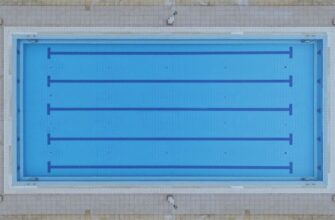What Is Aave Flexible and Why Deposit SOL?
Depositing SOL on Aave Flexible lets you earn variable interest on your Solana holdings while maintaining liquidity. Aave Flexible (variable rate) is a decentralized lending pool where users supply crypto assets like wrapped SOL to earn yield based on real-time market demand. Unlike fixed-rate options, flexible rates fluctuate, potentially offering higher returns during high borrowing activity. This approach turns idle SOL into passive income while keeping it accessible for withdrawal—ideal for investors seeking flexibility without locking funds.
Prerequisites for Depositing SOL on Aave
Before starting, ensure you have:
- Wrapped SOL (wSOL): Aave doesn’t support native SOL. Convert SOL to ERC-20 wSOL via bridges like Wormhole or Allbridge.
- Web3 Wallet: MetaMask or similar wallet connected to Ethereum/Polygon networks.
- Gas Fees: ETH (Ethereum) or MATIC (Polygon) for transaction costs.
- Aave Access: Visit app.aave.com and connect your wallet.
Step-by-Step: How to Deposit SOL on Aave Flexible
- Bridge SOL to wSOL: Use a cross-chain bridge (e.g., Portal Bridge) to convert SOL to Ethereum-compatible wSOL. Approve transactions in both Solana and Ethereum wallets.
- Connect to Aave: Open Aave’s app, select Ethereum or Polygon network, and link your wallet.
- Deposit wSOL: In the ‘Deposit’ section, search for wSOL. Enter the amount and review variable APY.
- Confirm & Monitor: Approve the transaction (paying gas fees). Your wSOL now earns interest! Track APY fluctuations in your Aave dashboard.
Key Benefits and Risks of Aave Flexible for SOL
Benefits
- Dynamic Yields: Variable rates can outperform stable options during bull markets.
- Liquidity Access: Withdraw funds anytime without lock-up periods.
- Collateral Utility: Use deposited wSOL to borrow other assets on Aave.
Risks
- Rate Volatility: APY can drop significantly during low-demand periods.
- Smart Contract Vulnerabilities: Aave is audited but not risk-free.
- Bridge Dependence: Wrapping SOL adds complexity and potential bridge-related failures.
Top Alternatives to Aave for SOL Deposits
If Aave Flexible doesn’t fit your needs, consider:
- Solend (Solana Native): Deposit native SOL directly for variable APY without wrapping.
- Marinade Finance: Stake SOL for mSOL and deposit in DeFi protocols for compounded yields.
- Port Finance: Borrow/lend SOL natively with flexible or fixed rates.
FAQ: Depositing SOL on Aave Flexible
Q: Can I deposit native SOL on Aave?
A: No. Aave only supports wrapped SOL (wSOL) on Ethereum/Polygon. Use bridges to convert SOL first.
Q: What’s the average APY for wSOL on Aave?
A: Rates vary—typically 1-5% APY. Check Aave’s dashboard for real-time data.
Q: Are there withdrawal fees?
A: No withdrawal fees, but gas costs apply for transactions.
Q: Is my SOL insured on Aave?
A: No FDIC insurance. Aave uses audited smart contracts, but funds carry inherent DeFi risks.
Q: Can I borrow against my deposited wSOL?
A: Yes! Enable wSOL as collateral in Aave to take out loans in stablecoins or other assets.
Final Tips for Success
Maximize your SOL deposits by:
- Monitoring Aave’s variable rates weekly to capitalize on APY spikes.
- Using health factor alerts to avoid collateral liquidation if borrowing.
- Starting with small amounts to test gas fees and bridge processes.
While depositing SOL on Aave Flexible requires wrapping, it unlocks DeFi opportunities beyond Solana’s ecosystem. For simpler SOL yields, explore native Solana platforms—but if cross-chain flexibility matters, Aave remains a powerful tool.








